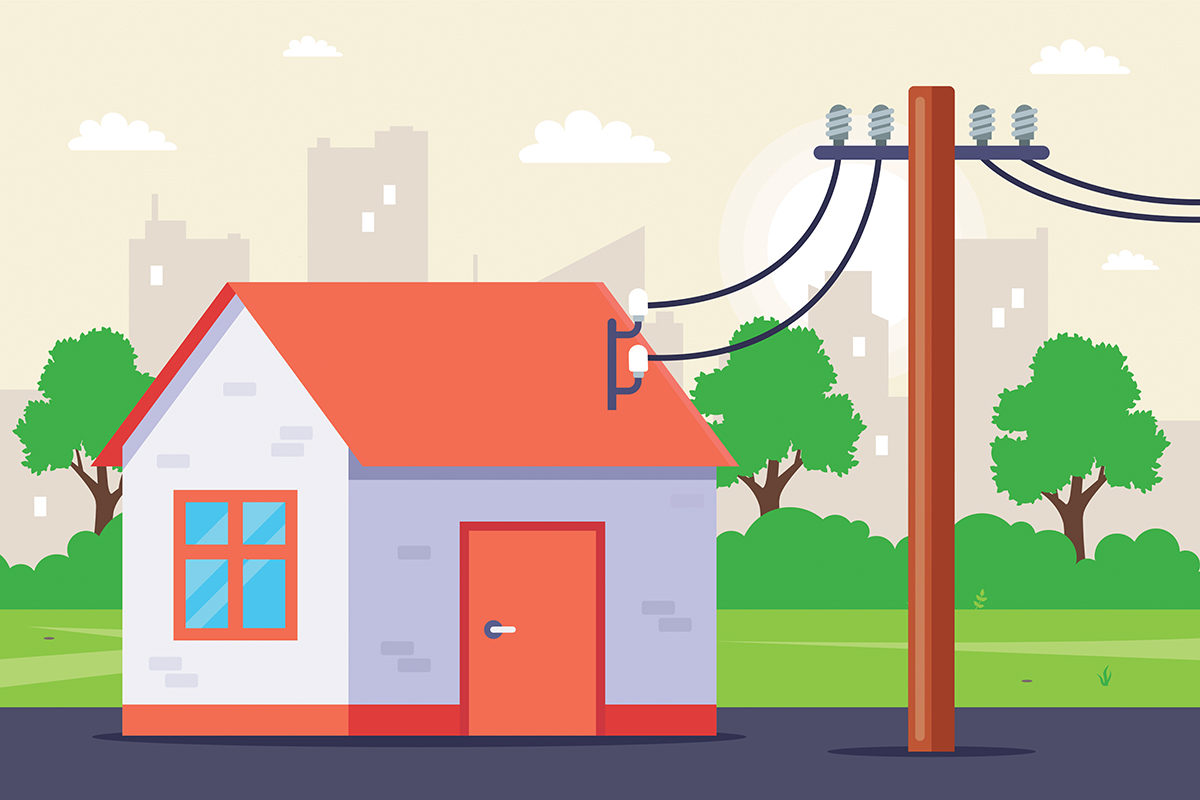This article revisits some definitions and requirements covered in Section 6 of the Canadian Electrical Code, Services and Service Equipment, beginning with a review of some often mentioned terms.
Supply service –a set of conductors run by a supply authority from its mains to a consumer’s service (the electrical utility’s wiring and connections to an outdoor meter base or to the main service box in a building).
Service box –the electrical equipment enclosure that contains the main service switch and fuses or the main circuit breaker for the electrical supply to a building or to one unit in a multi-unit building. The purpose for the service box is to have a single point of disconnection for the entire building or for one of its units in an emergency or when otherwise necessary.
Consumer’s service –all of the wiring and equipment between the service box and the point where the electrical utility makes its connections, either at an outdoor meter base or at the main service box in a building. For example, for most residential services, this usually includes the service stack, meter base, service conduit and enclosed wiring. For a larger commercial or industrial service, it’s the wiring and conduit to the main service box in the building.
Rule 6-102 specifies that with some exceptions, there should be no more than one supply service of the same voltage or electrical characteristics in each building. Fire pumps or other emergency systems are such exceptions, since there may be some excellent reasons as to why they should be served by a separate supply service. The main power supply may trip out or may need to be turned off in the event of a building fire, thereby leaving the fire pumps without electrical power. A separate supply service improves the chances that a fire pump will continue to run, in particular when fire is the result of an electrical short circuit.
Another good reason for separate supply services, Rule 32-212 tells us that fire pumps must not be connected to a ground-fault protected circuit. Since the Canadian Electrical Code does require ground-fault protection for large, 120/208-volt and 600/347-volt, services it follows that under such circumstances, fire pumps must have a separate supply service.
A more subjective exclusion given by Rule 6-102 is “industrial establishments and other complex structures.” There are several practical reasons why large or complex facilities may require more than one supply service. Here are a few.
1. Excessive voltage drop—distributing low voltage electrical power from a single connection point in a large building may result in unacceptable voltage drop or require heavier wiring to eliminate excessive voltage drop. Such facilities may need several points of supply to minimize circuit lengths and voltage drop problems.
2. Another reason, from the supply authority’s point of view—an electrical utility may not be capable of supplying all the facility’s loads from a single feeder, and may need to bring in more than one electrical supply to meet the owner’s electrical power requirements.
3. The facility owner may need a higher level of reliability than can be provided by a single supply service, thereby requiring the electrical utility to provide more than a single feeder.
4. Self-contained row type occupancies in a building, each unit having a building entrance at grade level—this type of construction would include row housing and commercial or industrial type malls.
When more than one supply service is provided, Rule 6-102 requires that the service boxes be grouped in one location “when practicable.” When this is impracticable, a diagram must be posted at each service box location showing the locations of other service boxes in the building. You can be sure that this knowledge is of utmost importance during a fire or other emergency, or when there is a maintenance shutdown.
According to Rule 6-200, each consumer’s service should have no more than one service box with two exceptions. More than one service box in a building may be provided by subdividing the consumer’s service in an outdoor meter base or dual lug meter base as long as the service size is not larger than 600 amperes and 150 volts-to-ground (120/208 or 240 volts). Rule 6-104 also restricts the number of such service subdivisions to four.
Rule 6-202 takes this story one additional step. It specifies that for each subdivision of a consumer’s service, there must be separate service box in each unit of a multi-occupancy building, or a multi-service switchboard may be used. The reason for this requirement is fairly clear. We may need to disconnect the supply to one of the units without affecting the rest.
As with previous articles, you should consult the local electrical inspection authority in each province or territory as applicable to obtain a more precise interpretation of any of the above.










Find Us on Socials